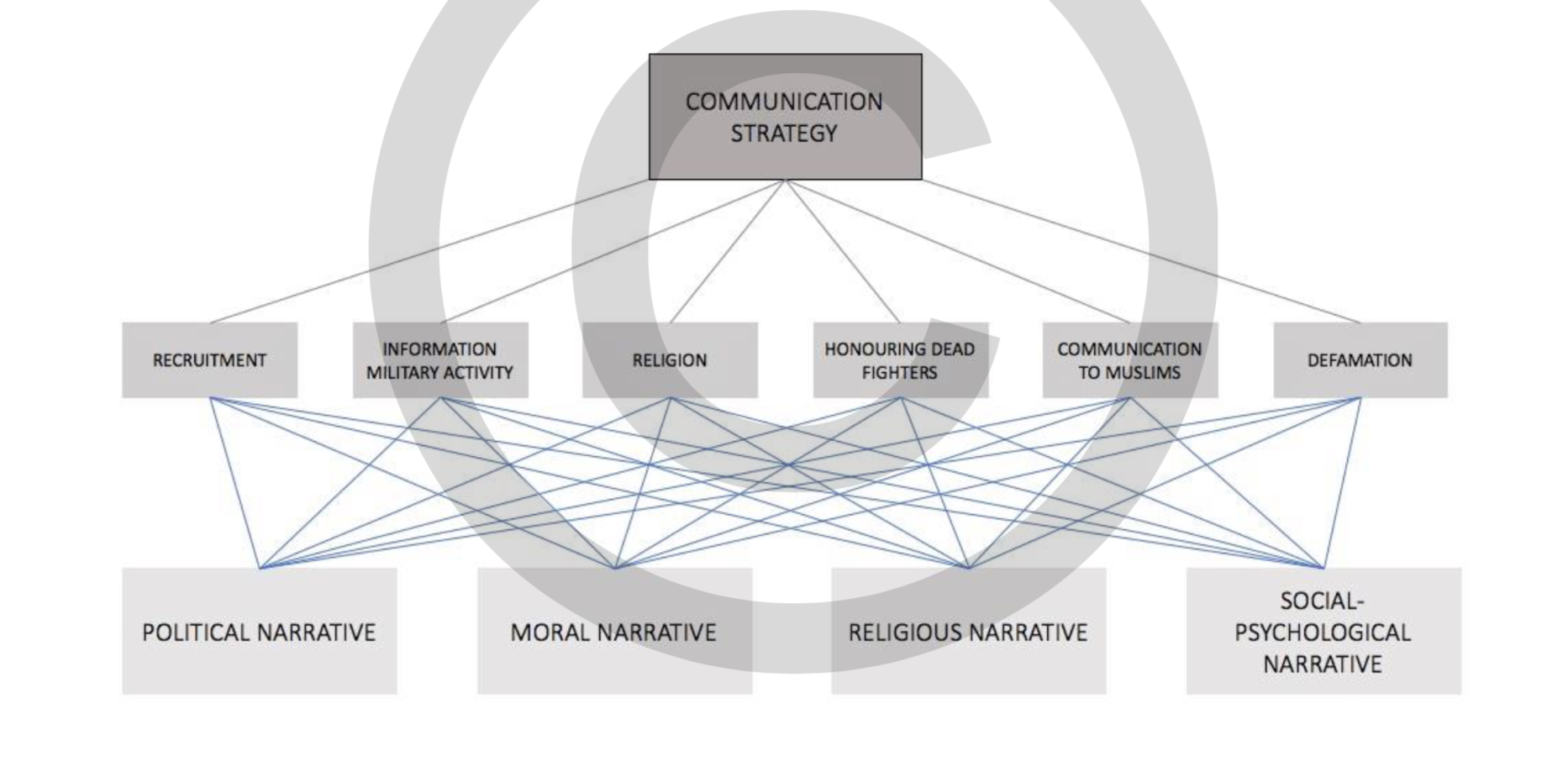
Reading done on September 16 2017
"Communicating Terror : an Analysis of ISIS Communication Strategy"
- by Clara Pellerin
- Course "Islam and Politics in a Changing Middle East" taught by Stéphane LAcroix at Sciences Po - Spring 2016
- This paper has received the KSP Student Paper Award of the Kuwait Program at Sciences Po
- screenshot from Pellerin 2016, 13.
In this essay, Pellerin raises the question: "which characteristics ISIS's communication strategy features?"
Therefore, this essay:- first, provides a quick overview on the use of (strategic) communication by jihadist groups
- Second, it analyzes different media used by ISIS
- Third, it investigates the goals of ISIS's communication strategy, based on six themes of communication identified in academic literature
- Finally, it examines how these themese are built "into meta-narratives of global jihadism" (Pellerin 2016, 2).
Islamist terrorist groups' publications and communication have spread of central organization and towards affiliated branches, whereas, ISIS introduced a "new modus operandi" (mode of operation) (3) and it introduced Wilayats (provinces) 'over which ISIS maintains direct control and command with regards to communication and publications" (Azoulay, 2015 as cited in Pellerin 2016, 3). Additionally, there are local terrorist groups who have pledged allegiance to ISIS but are not considered to be provinces - "little authority is executed on operations" (Pellerin 2016, 3) and the groups govern themselves (Pellerin 2016, 3).
"Though expansion has largely relied on brute force and violence it strategically uses communication to provide both credibility as well as legitimacy, proving its capacities with regards to propaganda, using diverse sources of media to recruit, intimidate, communicate, legitimise, diffame and glorify (Pellerin 2016, 4).
"ISIS controls media offices in each of the Wilayats, maintaining tight control over all publications that have the function of official outlets, fulfilling multiple functions, from recruitment, over dissemination of ideology and tactics to sowing fear and intimidation (Callimachi 2016, as cited in Pellerin 2016, 4).
The different media outlets used by ISIS
- The affiliated news agency Amaq, and the media offices in all provinces of ISIS - to facilitate:
1- dissemination
2- volume/magnitude
3- coordination of communications
(Pellerin 2016, 4).
"ISIS allegedly has a Chief of Media Operations in charge of its Al Hayat media division" (Pellerin 2016, 4).
"ISIS has proven particular efficiency with regards to its use of Twitter" (Pellerin 2016, 4).
"ISIS has been efficient developing coping mechanisms to remain in control over information flows on network", even though the group's official accounts on Twitter have been more or less deleted (Pellerin 2016, 4).
"It has been noted that ISIS's production of videos has moved towards high-quality and high-production sheen of hollywood films, where the videos, as tools of propaganda have come to include cinema's marketing language in addition to visual vocabulary" (Pellerin 2016, 5).
"ISIS regularly publishes its own propaganda magazine, named Dabiq which has its main target, reaching audiences in the West for recruiting purposes" (Pellerin 2016, 5). It is a periodical that focuses on issues of tawhid (unity), manhaj (truth-seeking), hijrah (migration), jihad (holy war) and jama'ah (community)" (Clarion Project 2014, as cited in Pellerin 2016, 6).
"At the heart of the publication lies the representation of ISIS self-conceptualisation, a holy, divine army, fighting for the "glorious" caliphate, presenting its narratives with ferocious and boasting language" (Pellerin 2016, 6).
Main themes of communication by jihadist and islamist groups
1- Recruitment and direct call to jihad (on page 8)2- Information of military activity (on page 8)
3- Religion (on page 8)
4- Honouring dead fighters (eulogies, martyrdom, and condolences) (on page 9)
5- Communication to Muslims - portraying themselves as true Muslims, and as a unified community and group "through emotional content such as imagery and symbolism" (on page 9)
6- Defamation - the out-group (evil) /in-group dynamic to justify attacks (on page 10)